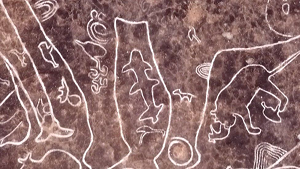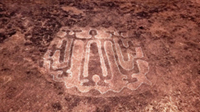|
Indian Petroglyphs Date to 10000 B.C.
October 7, 2018
Archaeologists in India have found a number of rock carvings thought to be tens of thousands of years old and perhaps created by a previously unknown civilization. The petroglyphs are in the Konkan region of Maharashtra, a state in the western part of the country. Some petroglyphs were known to people living in the area and were, in fact, worshiped by some of those local people, who considered the drawings as holy. Most of the petroglyphs, however, had been hidden beneath layers of civilization for a very long time. Among the shapes discovered are birds, humans, sharks, turtles, whales, and geometrical designs. Not confined to one area, the petroglyphs were carved in a number of places, in what is now 52 villages. Based on observations of the drawings and the soil that covered them, in addition to comparing the drawings to similar ones found elsewhere in the world, the archaeologists concluded that the petroglyphs date to 10000 B.C. A primary clue was the lack of any agriculture-inspired images; because of that, the archaeologists have concluded that the artists were hunter-gatherers. People have long lived in what is now India. The first known civilization was the Indus Valley Civilization, which flourished in the 4th Century B.C. and featured population centers at Harappa and Mohenjo-Daro. That civilization flourished for a handful of centuries and was highly advanced but mysteriously disappeared. The petroglyphs predate that civilization by a few centuries. |
Social Studies for Kids |
Social Studies for Kids
copyright 2002–2019
David White






